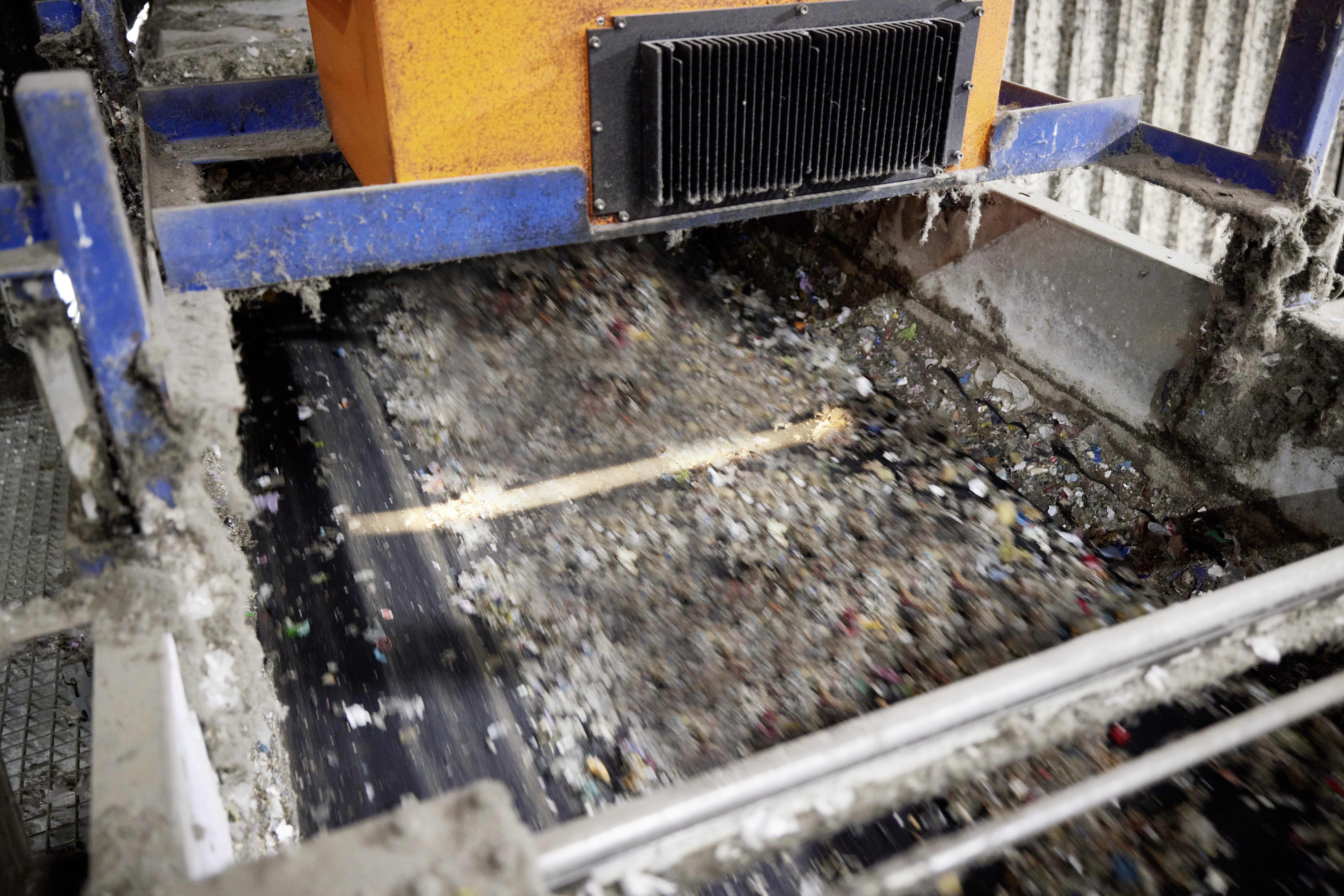
While the demand for premium SRF is steadily increasing, so too are the challenges within the industry. After all, the waste and recycling industry is also affected by high energy costs. What’s more, there is still a shortage of skilled workers who are needed to maintain and service the processing and recycling facilities. The goal – increased production and throughput at reduced operating costs – initially seems contradictory. Yet, it is possible, if one considers essential parameters, such as perfectly coordinated machines used in a recycling plant or optimising the integrated shredding solutions. For example, if shredders are consistently run at the optimal operating point, resistant to non-shreddables, and are easy to maintain or low maintenance, it is possible to significantly increase both productivity and energy efficiency.
Setting new standards in productivity and ease of maintenance
Lindner’s Komet Series shredders have been on the market for over twenty years. Lindner specifically addresses industry needs with the Series 3, launched in 2022. ‘Because we are so close to our clients, we realised early on that there is a shortage of skilled workers and a demand for greater productivity and energy savings,’ explains Stefan Scheiflinger-Ehrenwerth, Head of Product Management at Lindner. ‘The Komet Series 3 models are therefore equipped with product features that allow the shredders to be practically maintenance-free and also make optimal use of energy,’ he adds.
New Features
An automatic belt tensioning system, or ATB for short, is at the core of the new products, which also feature a dust-proof drive unit and new software. While the new software features are designed to increase user-friendliness and machine controllability, the ATB ensures the belt tension is continuously monitored. If the tensioning force deviates from defined parameters, the belt is automatically retightened. The consistent belt tension achieved by the ATB ensures that the shredder always runs at the optimum operating point, ideally utilising power transmission and energy. ‘This also means that it’s no longer necessary to re-tension belts by hand, and it’s easier to plan belt replacements,’ adds Scheiflinger-Ehrenwerth. ‘Low maintenance also inevitably leads to minimal downtimes and high uptimes, which is another factor that significantly increases productivity. The ATB can also be retrofitted without any problems.’ This makes it possible to reduce maintenance work to a minimum, as well as make it as efficient and predictable as possible.
Pader Entsorgung selects another Lindner Komet 2800 HP
The company Pader Entsorgung GmbH & Co. KG (PEG), a subsidiary of the Lobbe Iserlohn and PreZero (Porta Westfalica) groups, has been operating a high-performance mechanical recovery facility in Paderborn-Elsen, Germany, since 2005. It processes municipal solid waste, commercial waste and mixed construction waste – 24 hours a day, five days a week. Around the clock, valuable materials are returned to the material cycle as secondary raw materials in complex processes, and non-recyclable materials are turned into high-calorific solid recovered fuels. This energy-rich SRF is supplied to the cement and power generation industries in particular. Lindner’s Komet 2800 secondary shredder has been part of the team since 2013. ‘We opted for a Lindner Komet in 2013 because at the time it was certainly the most powerful and highest-throughput machine on the market thanks to its seven-row rotor and well-dimensioned drive. This is still the case today,’ affirms Daniel Vermeulen, Technical Operations Manager at Pader Entsorgung.
While initial production was around 25,000 metric tons of high-calorific SRF annually, the current production target is > 60,000 metric tons per year. ‘Since the energy crisis, the market has changed. Companies, including cement plants, are increasingly substituting coal, natural gas and oil with high-calorific SRF. The high demand has made it necessary to expand the facility and shredding equipment. Our machines run continuously for 5 days. This demands good quality and minimal downtimes, which can be achieved mainly with low maintenance. In terms of energy costs, we also have to save. That’s why we chose another Komet from Lindner,’ Vermeulen explains. The material stream processed at Pader Entsorgung is primarily obtained from municipal solid and household waste. The material is often tough, the composition changes constantly, and the residual moisture is also usually very high. ‘The shredder has by far the most difficult task in the recovery process. The Komet 2800 HP is extremely powerful and has a high output – usually around 20 t/h. Handling is excellent, maintenance is well thought-out with easy access to the maintenance door and therefore to the rotor. Non-shreddables can be removed easily and with little loss of material. This means complex and time-consuming welding work is a thing of the past and the machine is fully operational again in no time at all.’
For solid recovered fuel to be a genuine alternative to primary fuels such as oil, coal, and gas and to be used in the main burner, it must meet high quality standards and possess a range of material properties. In addition to a homogeneous particle size of ≤30 mm, the water, ash and chlorine contents in particular, are a decisive influence on the calorific value. The output material is therefore continuously tested in-line with near-infrared sensors (NIR technology) installed immediately after the Komet. For quality assurance purposes, automated material samples are also taken for laboratory analysis. If the NIR sensors detect too much chlorine, material containing too much chlorine is diverted to a separate bunker and processed differently.









